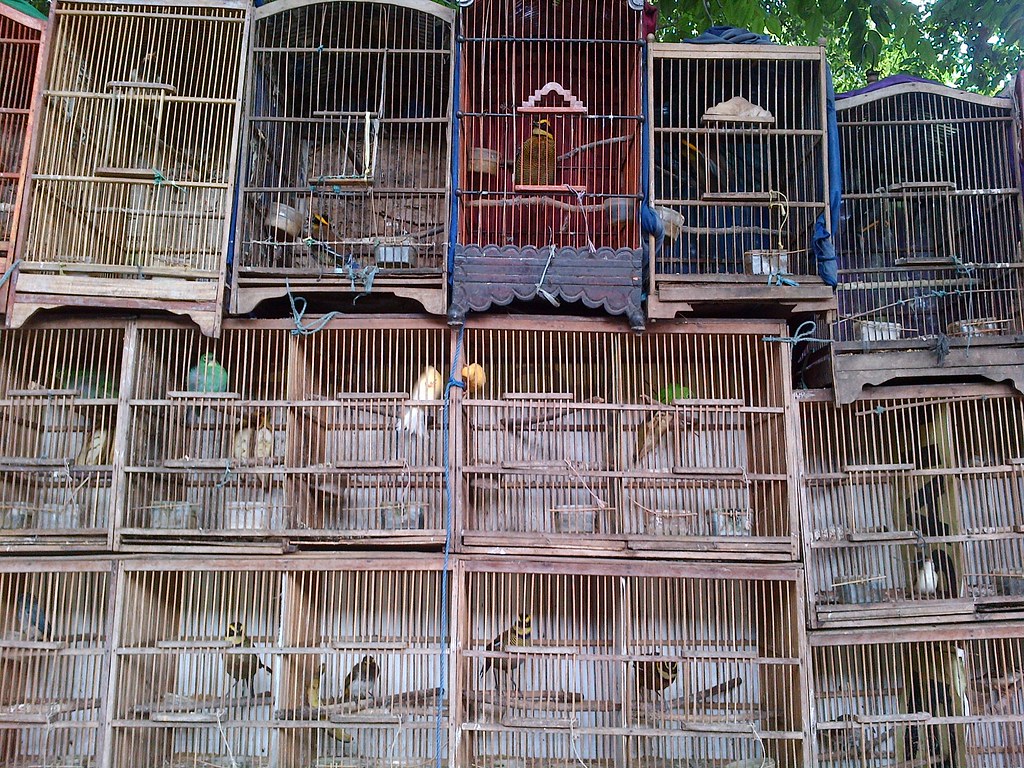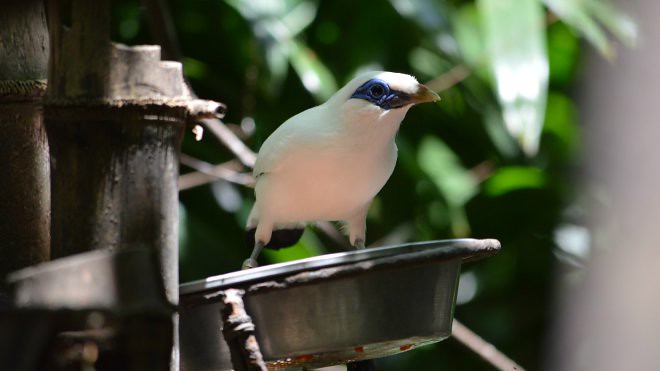未來很可能再也聽不到鳥兒在森林中歌唱?隨著亞洲越來越富裕,許多亞洲人得以實現擁有一隻彩色鳴鳥的願望,但同時,亞洲鳴鳥也逐漸從森林棲地中消失。最近有專家小組發起「寂靜森林」(Silent Forest)運動,為野外保育專案籌措資金,讓亞洲鳴鳥免於滅絕。
國際野生物貿易研究組織TRAFFIC東南亞區域主任克禮許芮莎米(Kanitha Krishnasamy)警告:「亞洲鳴鳥的生存危機已經達到臨界點,再不採取行動,很可能再也聽不到牠們在森林中歌唱。」
現在,歐洲動物園和水族館協會(European Association of Zoos and Aquaria)與TRAFFIC、國際鳥盟(BirdLife International)和世界自然保育聯盟(IUCN)亞洲鳴鳥貿易專家小組合作推展「寂靜森林」(Silent Forest)運動,盼讓大眾瞭解東南亞鳴鳥的破壞性影響,為野外保育專案籌措資金,扭轉鳴鳥數量下降的趨勢,拯救亞洲鳴鳥免於滅絕。
寂靜森林運動將運作兩年,具體目標是向歐洲動物園及其遊客籌募40萬歐元,用來保育IUCN列入極度瀕危的六個旗艦鳥種。
長冠八哥(Bali Myna)和短尾綠鵲(Javan Green Magpie)等鳥類正瀕臨滅絕邊緣,而白腰鵲鴝(White-rumped Shama)則是一度很常見,卻因為由於當地市場需求升高而數量減少。
寂靜森林預計打造一個由24個精心設計的鳥舍組成的新設施,並在北蘇門答臘省建立配套基礎設備。這些設施將用於發展和維護蘇門答臘黑白噪鶥(Laughingthrush; Garrulax bicolor)和尼亞鷯哥(Gracula robusta; Nias Hill Myna)的圈養族群,並留置和繁殖其他受威脅的蘇門答臘物種。同時也將訂定珍稀鳥類野放策略和野放後監測和管理策略。
計畫的最終目標是依照正確方法圈養繁殖印尼鳴鳥,以支持野外族群免於滅絕,建立地方政府和社群的問題意識和對保育的重視,並從其他利害關係者獲得對為保育計劃的支持。
主持寂靜森林運動的利貝雷茨動物園人員赫爾(Thomas Ouhel)指出,歐洲動物園籌措的資金可以產生可觀的影響力,「如果我們能說服商人與保育工作者和育種者合作,而不是從森林中抓取野外族群,就有機會改變對鳴鳥所有權的態度,進而拯救這些鳥類。」
來自歐洲動物園與水族館協會和其他單位的生物學家,將以科學方法加強對保護這些鳥類。
去年12月發布的IUCN紅色名錄更新內容顯示,許多最受歡迎的玩賞鳥類有嚴重的存續危機,由於被大量地捕捉,在野外近乎滅絕。
在亞洲,有19個物種保護等級提高,其中六個上升為極度瀕危,差一步就滅絕,包括紅額噪鶥(英文名:Rufous-fronted Laughingthrush; 學名:Garrulax rufifrons)、斑椋鳥(英文名:Javan Pied Starling; 學名:Gracupica jalla)、灰頭椋鳥(英文名:Grey-backed Myna; 學名:Acridotheres tricolor)等。國際鳥盟警告,這些物種都有永遠消失的危險。
這些物種都是印尼特有種,除森林砍伐之外,其數量下降的主因就是當地的鳥類貿易。尤其在爪哇、蘇門答臘和婆羅洲,養鳴鳥是當地文化的一部分。
The songbirds of Asia are disappearing from their native forests as increasingly wealthy Asians satisfy their desire to own a brilliantly colored singing bird.
“The Asian songbird crisis has reached a tipping point: without immediate action, it is almost certain their voices will be silenced forever in the forest,” warned Kanitha Krishnasamy, acting Southeast Asia regional director of the wildlife monitoring nonprofit TRAFFIC.
Now, the European Association of Zoos and Aquaria, together with TRAFFIC, BirdLife International and the IUCN Asian Songbird Trade Specialist Group, are collaborating to save Asian songbird species from extinction.
Entitled Silent Forest, the campaign is expected to raise awareness of the devastating effects of the trade in songbirds across Southeast Asia.
Campaigners hope to raise funds for field conservation projects that can reverse the decline in numbers of some of the world’s most beautiful birds.
Silent Forest will run for two years and is aimed at raising €400,000 from European zoos and their visitors to help save six Critically Endangered flagship species identified by the coalition and the International Union for the Conservation of Nature, IUCN.
Birds such as the Bali Myna and Javan Green Magpie are teetering on the brink of extinction, while the White-rumped Shama was formerly widespread and common but has declined because it is highly sought after in markets across the region.
The Silent Forest campaign plans to establish a new facility consisting of 24 carefully designed aviaries, and associated supporting infrastructure in North Sumatra Province. These aviaries will develop and maintain a captive population of Sumatran Laughingthrush (Garrulax bicolor) and Nias Hill Myna (Gracula robusta) and house and breed other Sumatran threatened species. They will develop strategies for release and post-release monitoring and management of the rare birds.
The project goal is to support the Indonesia songbird population in the wild against extinction by ensuring their captive-breeding following husbandry guidelines, building awareness in local government and communities about the existing and growing threats and about the importance of conservation action, and by gaining support from other stakeholders to contribute to the conservation program.
Thomas Ouhel of Liberec Zoo, who is chairing the Silent Forest Campaign, pointed to the difference that funds raised by European zoos could make. “If we can persuade traders to work with conservationists and breeders rather than pillaging the forests, there’s a real chance to save these birds by changing attitudes towards the ownership of songbirds.”
Leading biologists from the European Association of Zoos and Aquaria and elsewhere will work on scientific measures to increase protection for these avian species.
Last year’s IUCN Red List update, issued in December, delivers a chilling warning about the plight faced by some of the world’s most popular cagebirds, with many much-loved species now being trapped and traded into near-extinction in the wild.
In Asia, 19 species were uplisted to a higher threat category, including six to Critically Endangered, the last stop before extinction.
These species are Rufous-fronted Laughingthrush (Garrulax rufifrons), Javan Pied Starling (Gracupica jalla), Black-winged Myna (Acridotheres melanopterus), Grey-backed Myna (Acridotheres tricolor), Grey-rumped Myna (Acridotheres tertius) and Nias Hill Myna (Gracula robusta). All these species are in danger of disappearing within our lifetimes, warns BirdLife International.
All these species are endemic to Indonesia, and while deforestation is a factor, the main driver of their decline is the local bird trade. This is largely centered around Java, Sumatra and Borneo, where keeping songbirds is an integral part of local culture.
※ 全文及圖片詳見:ENS










